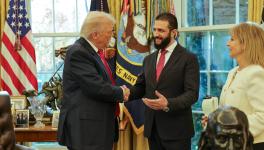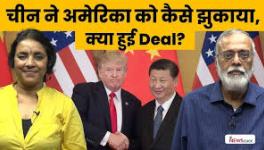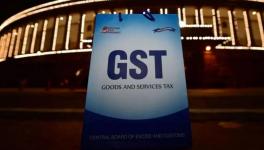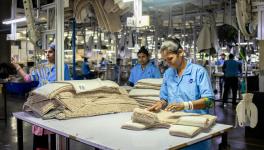China-US Trade War: From Chip to Rare Earths
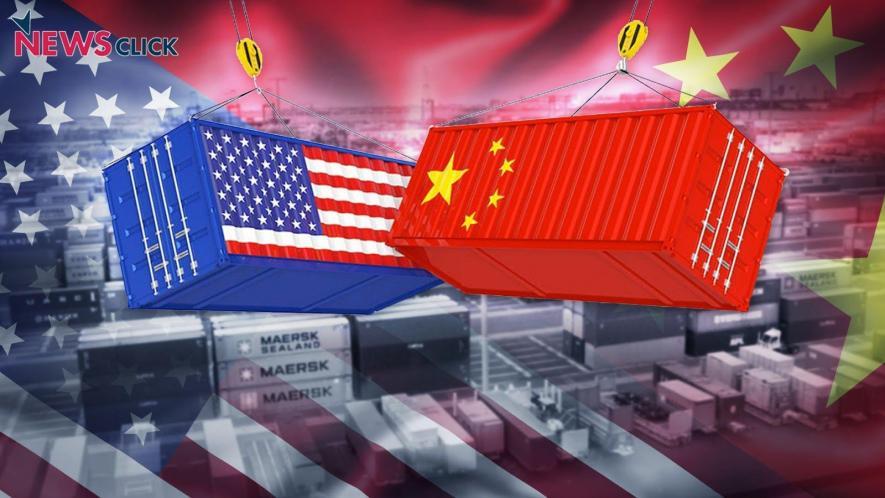
The decoupling of the world’s major economies is now gathering pace. The US, which had appeared to have reached a tariff truce with China earlier, recently ramped up its export controls targeting China’s semiconductor industry with its September 29, 2025, notification, “Expansion of End-User Controls To Cover Affiliates of Certain Listed Entities”. China’s response was on rare earths: it created a similar set of end-user restrictions on its rare earth exports to the US, targeting a range of US industries, including defence, aerospace, and shipbuilding. The US has responded with a 100% tariff on all Chinese goods, shutting out all Chinese goods from its market, effectively decoupling the two economies.
Rare earths have applications in both civilian and military areas, as these are used extensively in electric motors, electric generators, wind turbines, cell phones, and other devices. In military applications, the US, for example, uses rare earths in its F-35 fighter jets, various submarines, missiles, radar systems, drones and smart bombs.
While Donald Trump has termed China’s expansion of rare earth controls to all countries as a “war on the whole world”, he conveniently “forgot” that the US has been using similar extraterritorial sanctions on a number of countries, including India, for example, on its importing Russian oil. India is not violating international law by importing Russian oil, but only the unilateral sanctions imposed by the US and its European NATO allies.
Similarly, the “banning” by the US and a few European powers of the so-called shadow fleet that Russia uses for its oil exports to countries such as India simply means ships not under insurance cover of Western insurance companies.
Though the trade war between the US and China was started by Trump in his first term, it was escalated and expanded by former US President Joe Biden in 2022. Though the US chip war was directed primarily against China, it was also used to extend US legal control over the export of its allies, the Netherlands, Taiwan, South Korea and Japan. The key battle involved ASML, the Dutch company, which has a near monopoly over the most advanced laser-based EUV (extreme ultra violet) lithographic machine in the world. It achieves a precision that no other tool manufacturer can currently match, and the only one that produces 5-nanometre or below chips.
The legal provision that the US has used to draw other countries into implementing its domestic laws is its position that, under its domestic laws, any company in the world that uses any US technology or product in its manufacturing is subject to the US export control regime. ASML uses lasers developed by a US company; therefore, it comes under the US export control laws.
The well-known case of the arrest of Huawei’s Vice President, Meng Wanzhou, in Vancouver, Canada, in 2018, held for three years by Canadian authorities, involved allegations of selling Huawei equipment to Iran, supposedly in violation of US export control laws. Neither the producer, Huawei, nor the company in Iran receiving Huawei products came under US jurisdiction, or use of US technology.
The US argument was that Huawei had violated a US trade ban on Iran, which entitled the US to request that any country in the world implement its domestic law. For those who might also remember, the US “arrested” Manuel Noriega in Panama and kidnapped him to the US for violating the US laws; even though Noriega had been a US puppet earlier.
In 2024, as a parting measure, the Biden administration imposed fresh sanctions on China. The US Commerce Secretary Gina Raimondo said that these sanctions (Financial Times, December 3, 2024), “aimed to degrade the People’s Republic of China’s ability to make the most advanced chips that they’re using in their military modernisation.”
As we know, the most advanced chips are used not in military applications but in iPhones, personal computers and a range of commercial products. What is important in all these sanctions is their extra-territoriality, meaning that US laws would apply to any entity—company or person—that uses any US technology in either its products or its manufacturing process.
A key feature of this expanded version of these laws was bringing products under US export control laws, irrespective of where the product is manufactured or the company is based. As long as any equipment that used a US product was used in the manufacture of the goods, or any component either produced by a US company or produced using US technology was used in its production, the goods fell under the ambit of US Export controls.
Regarding Trump’s statement that China has declared war on the world for extending extraterritorial provisions of its export rules to other countries, Beijing appears to have only copied the US, which has been waging this war for a long time. Clearly, the US wants the world to do what it says, not what it does!
For those who may recall US sanctions on India, the various trade controls that existed, including the COCOM controls during the Cold War, all had similar extraterritorial provisions. The stated objective of COCOM (Coordinating Committee for Multilateral Export Control) was not only to maintain military and economic dominance of the West, led by the US, against its strategic adversary, the socialist bloc, but also to prevent the emergence of countries like India as independent players. The COCOM not only covered a range of technologies and products directly used in the nuclear industry, but also extended to high-end machine tools, pressure vessels, heat exchangers, and electronic equipment, including high-end computers.
What are the rare earth controls that China has imposed on the export of products to the US and other countries? According to an article by the Centre for Strategic and International Studies (CSIS), a US think-tank, “The Chinese Ministry of Commerce’s Announcement No. 61 of 2025 implements the strictest rare earth and permanent magnet export controls to date.” I am reproducing what Gracelin Baskaran, the author, has written:
“The new export controls mark the first time China has applied the foreign direct product rule (FDPR)—a mechanism introduced in 1959 and long used by Washington to restrict semiconductor exports to China. The FDPR enables the United States to regulate the sale of foreign-made products that incorporate US technology, software, or equipment, even when produced by non-U.S. companies abroad. In effect, if US technology appears anywhere in the supply chain, Washington can assert jurisdiction.
Under the measures announced today, foreign firms will now be required to obtain Chinese government approval to export magnets that contain even trace amounts of Chinese-origin rare earth materials—or that were produced using Chinese mining, processing, or magnet-making technologies…”
In other words, China has done in rare earths what the US has been doing for a long time in the semiconductor sector, using its omnibus foreign direct product rule (FDPR). And no, the US did not apply this rule only to the semiconductor sector, but also to a range of other products during the Cold War.
Those who remember COCOM during the Cold War would remember that the US and its NATO allies used these controls for all dual-use technologies, including the nuclear sector, rockets, computers, and even machine tools. Not only India’s Atomic Energy Sector, BARC, but also India’s fertiliser plants came under the West’s technology bans, as some of the technologies used in fertiliser plants could also be used for heavy water production.
The US sanctions also targeted liquid fuel rockets that India wanted for its space programme, as well as high-end computers. The same direct product rule was also applied by the US, even against its allies, for example, against the Japanese company Toshiba for selling high-end milling machines to the Soviet Union.
Why have the Chinese decided to assert now that they can use the same set of rules that the US has been using against them from Trump’s first term, followed by Biden and now Trump 2.0 as well? China has been building up its ability to create tools that may not match ASML’s latest products but that are not too far behind. They appear to believe that even if they lag in computing power compared with the US, two things can equalise the game. One is simply smarter computing, as evidenced by DeepSeek’s much lighter-weight models, which show performances comparable to those of the cutting-edge AI models from US companies.
The second option, a larger number of computationally less efficient chips, can produce the same results, albeit at higher energy costs. Here, the huge Chinese electricity infrastructure, including its installed renewable capacity with lower operating costs, coupled with a very robust grid, gives China an edge over the US.
In other words, the superior chip performance of the US can be offset by China’s cheaper electricity and smarter computing algorithms. That could explain why China has chosen this juncture to challenge the US with its own export controls on rare earths, where it has a clear edge over the US.
Clearly, the tech war between the US, its European allies, and China is unfolding in a much larger arena than just AI and chips. Even in the restricted field of computational capacity, the battle is not simply over who can manufacture superior chips, but over the combined computational and energy infrastructure required to maintain the computational capacity.
The tech war between the US and China is entering a new phase in which global trade can be split into multiple blocs. Global supply chains are not going to end, but these are likely to splinter into multiple blocks with a few trying to negotiate a middle path. For countries like India, the challenge is crafting a viable middle path, the same one that we had during the Cold War.
Get the latest reports & analysis with people's perspective on Protests, movements & deep analytical videos, discussions of the current affairs in your Telegram app. Subscribe to NewsClick's Telegram channel & get Real-Time updates on stories, as they get published on our website.











